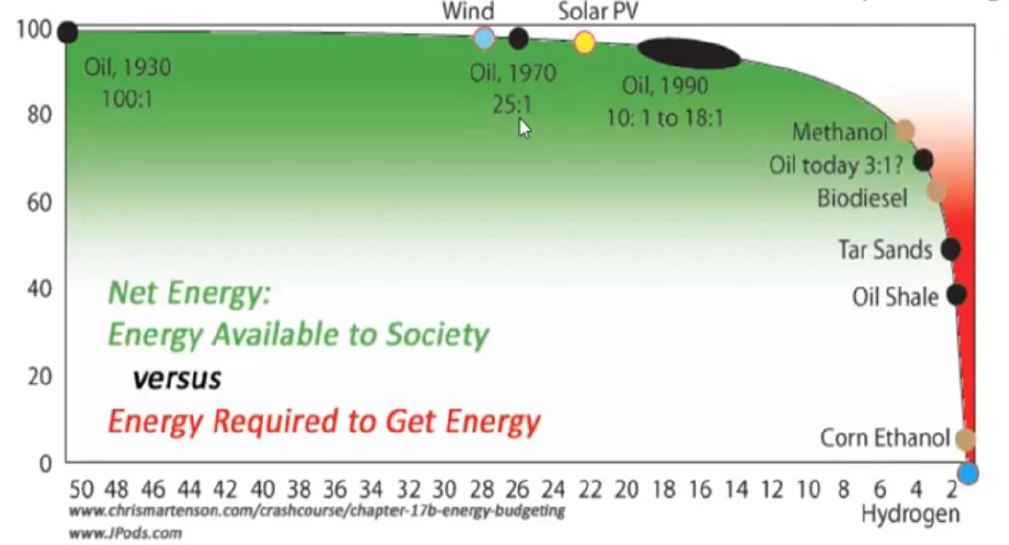The Net Energy Cliff
Revised 2 December 2023
Figure 1 shows the net energy cliff (Hall 2016) with net energy available for consumption as a percentage of gross energy plotted along the Y-axis and the energy returned on energy invested (EROI) plotted along the X-axis.

Figure 1: The Net Energy Cliff (based on Hall 2016)
All fossil fuel reserves peak in terms of the maximum rate of gross energy that can be produced over any one year and the gross energy which can be produced each year after peaking subsequently declines over time (Hall 2016).
The net energy cliff is where the net energy produced rapidly declines after the EROI of the fossil fuel has declined to a ratio as low as 6:1.
The energy returned on energy invested in all forms of fossil fuels inevitably declines to a ratio of 1:1 where it takes as much energy to produce or procure energy as that produced. There would still be fossil fuels in the ground which could be extracted for their chemical content, but to try and extract further fossil fuels from the ground as an energy source would be an energy drain on society.
A rapid decline in net energy over time does not apply to renewables. Each photovoltaic panel and wind turbine is replaced at the end of their service life and this replacement life cycle is taken into account when estimating their energy returned on energy invested. The longer the service life of photovoltaic panels and wind turbines, the greater is the EROI ratio and the percentage of gross energy returned.